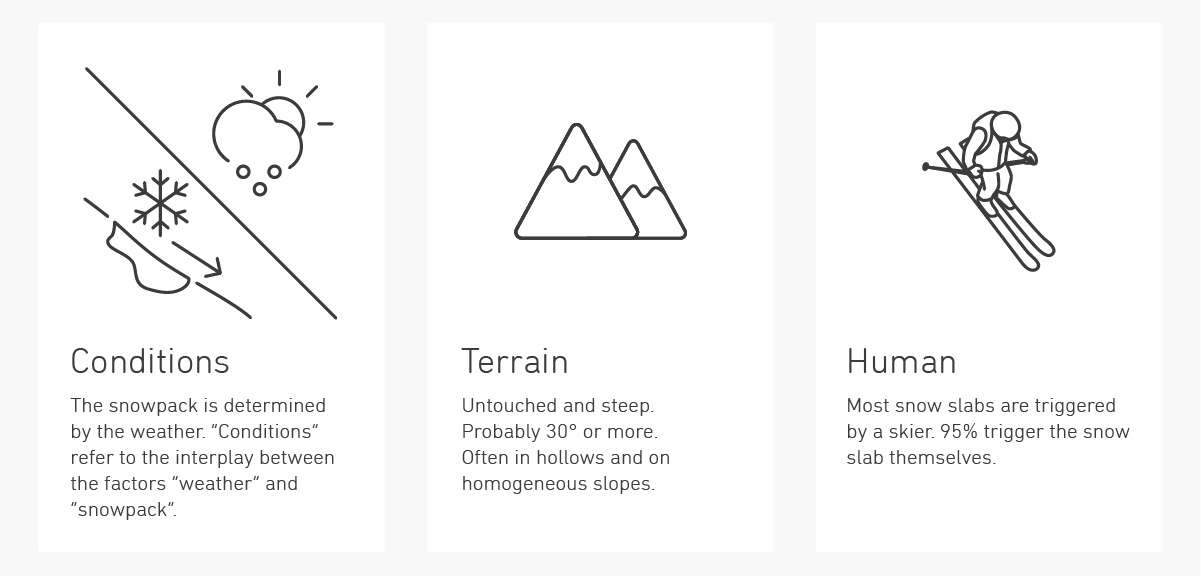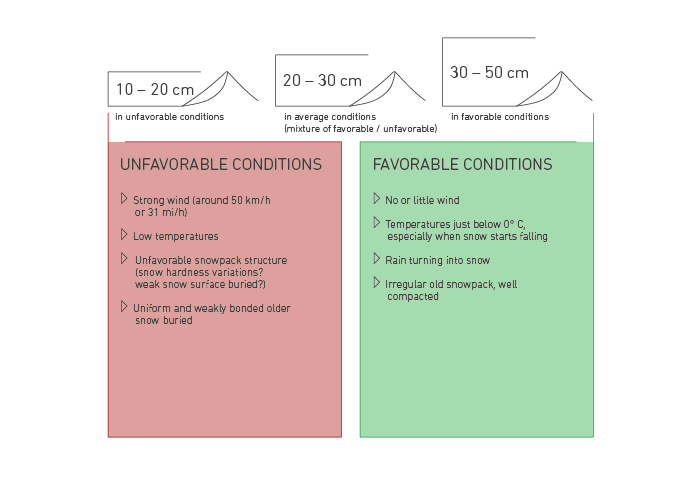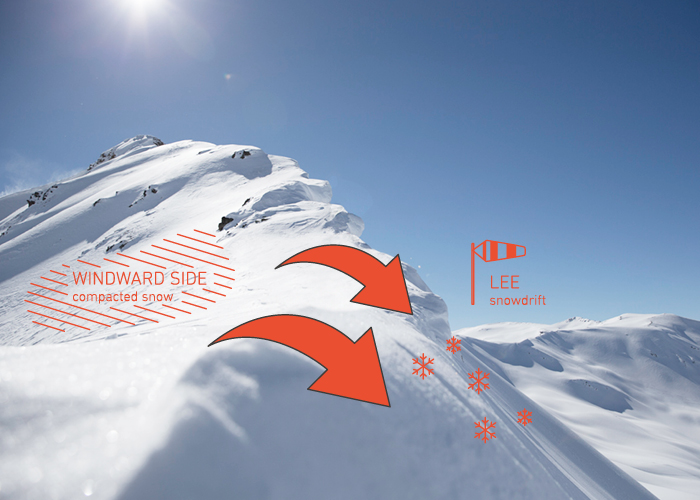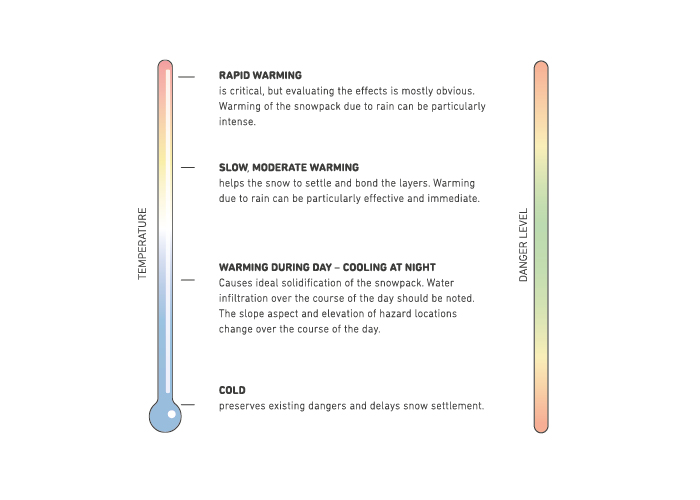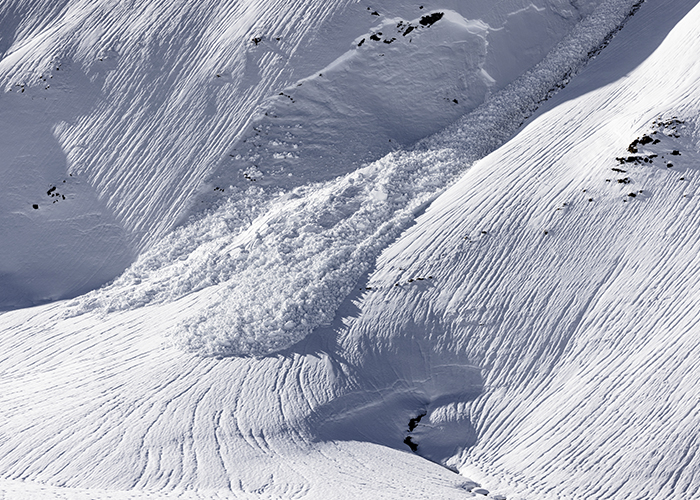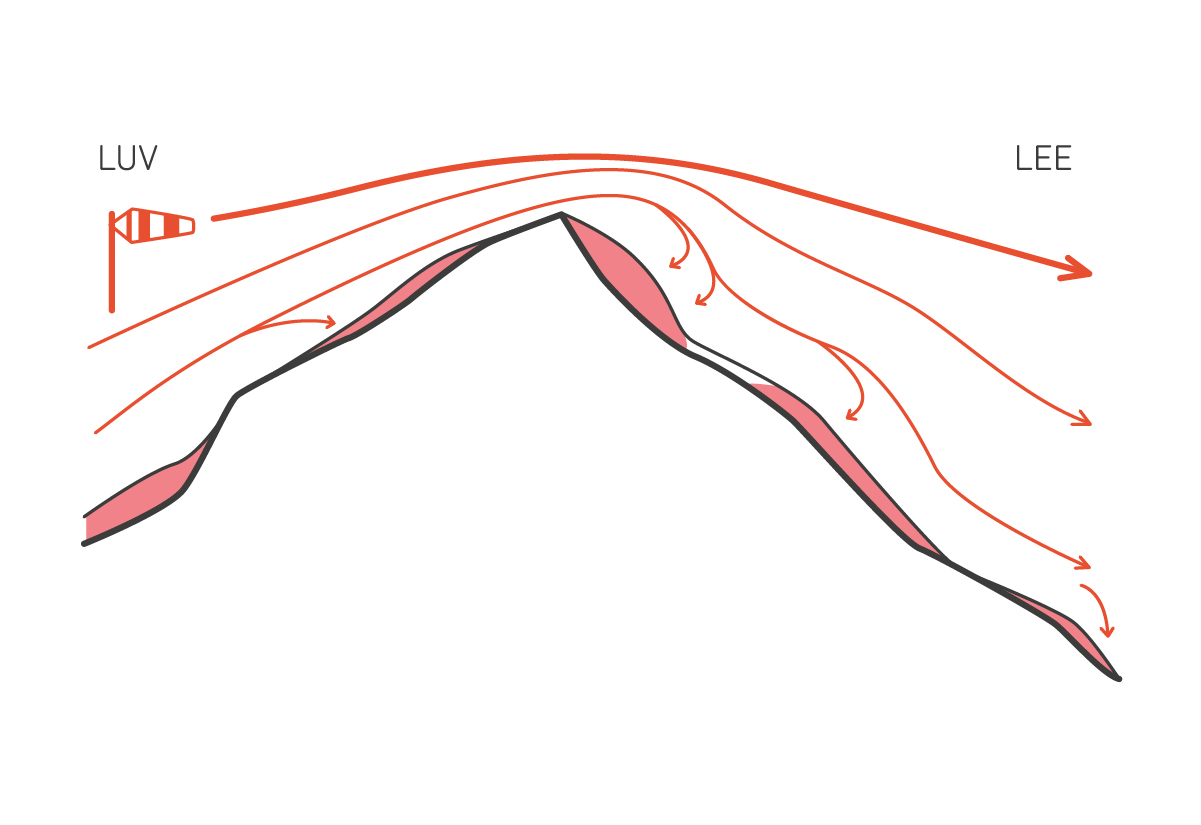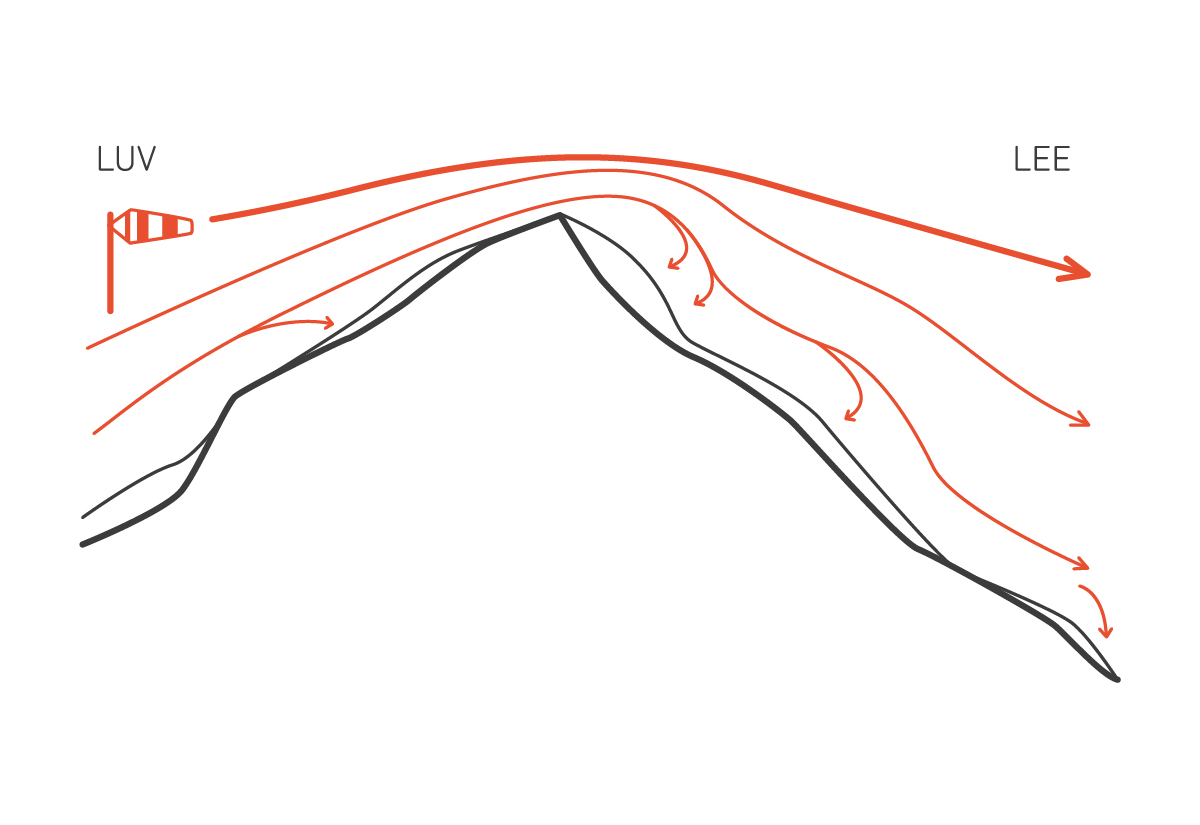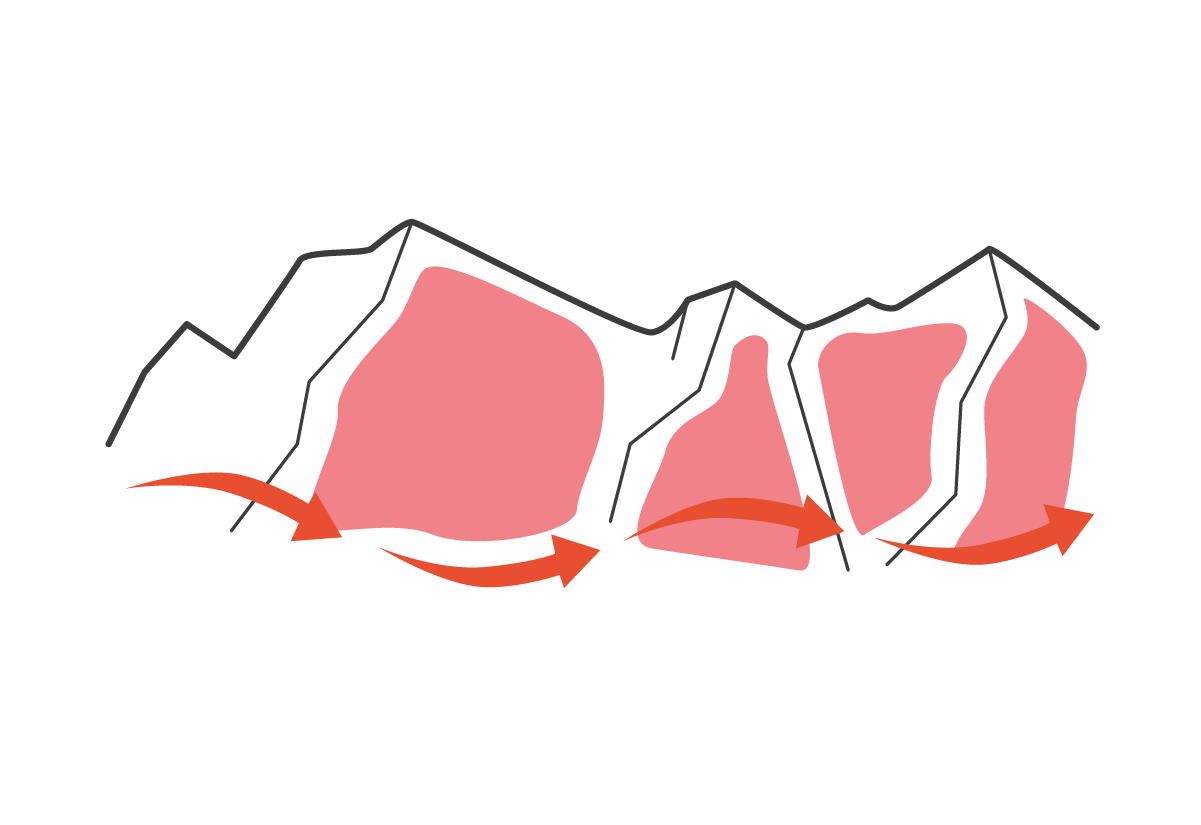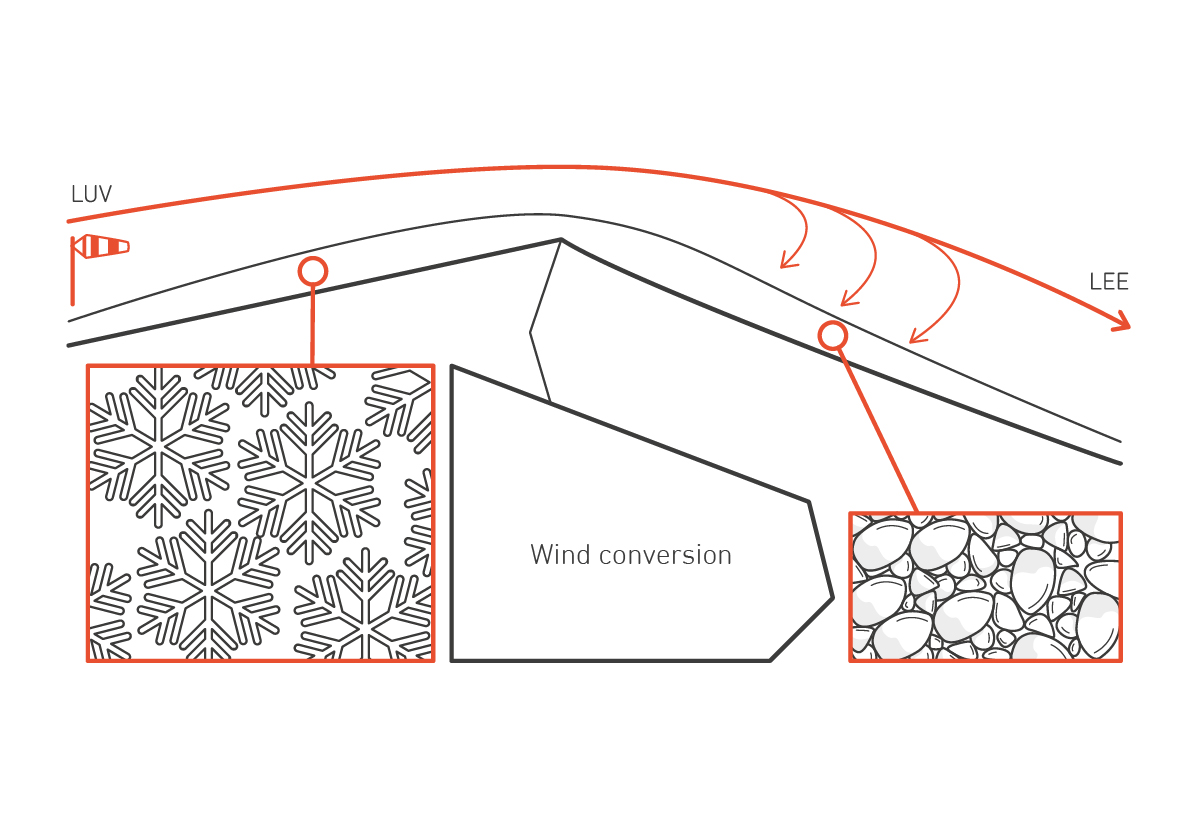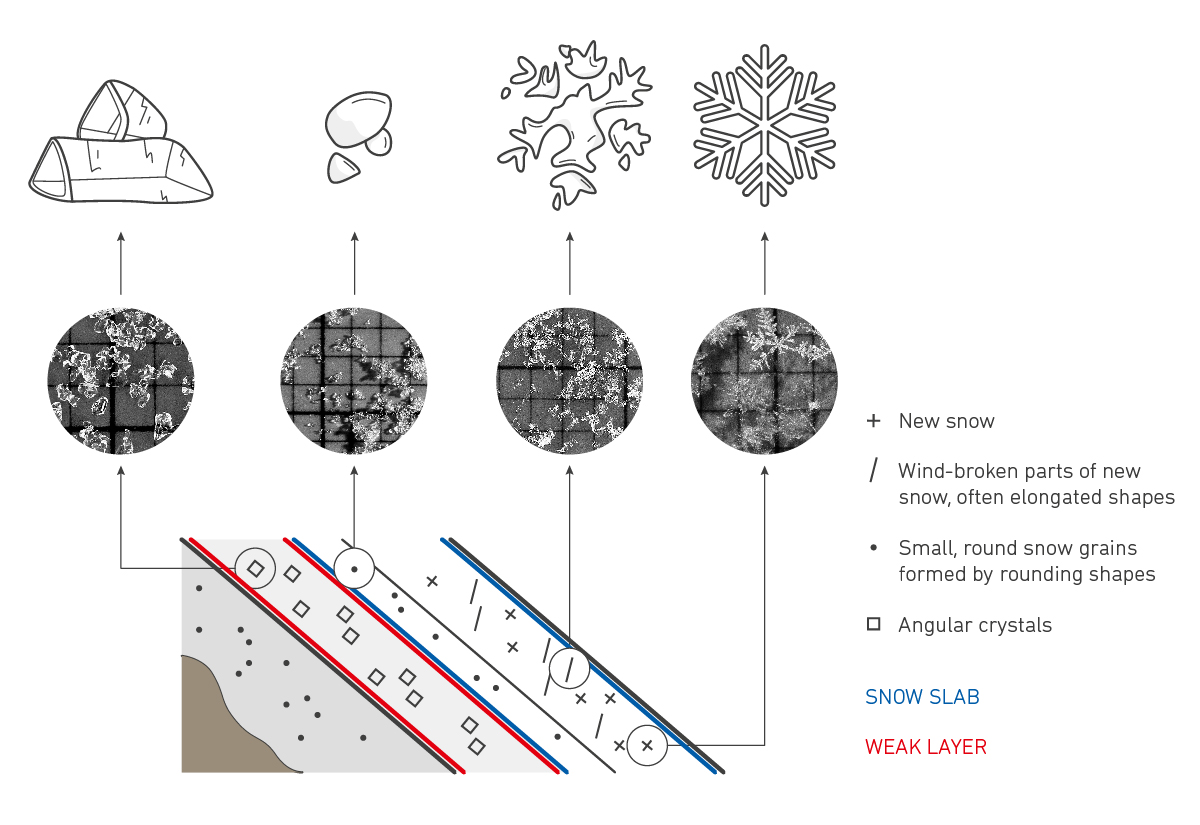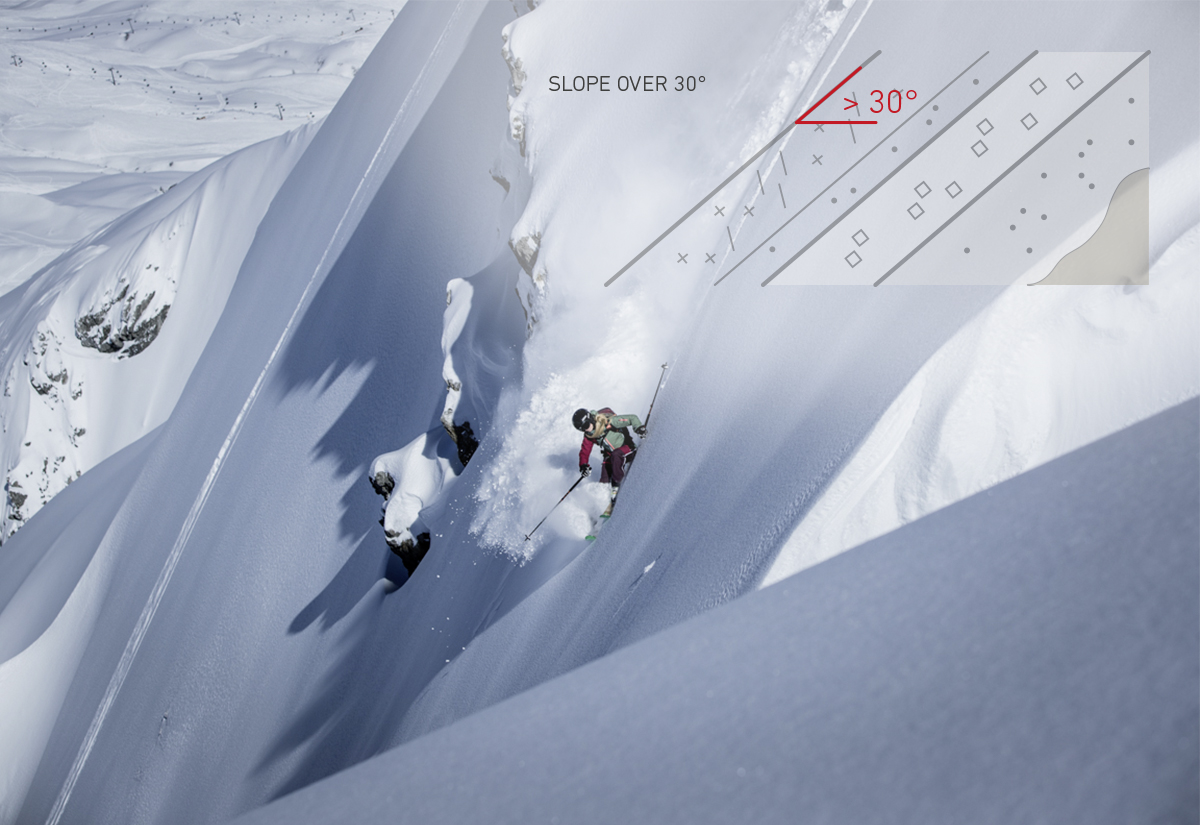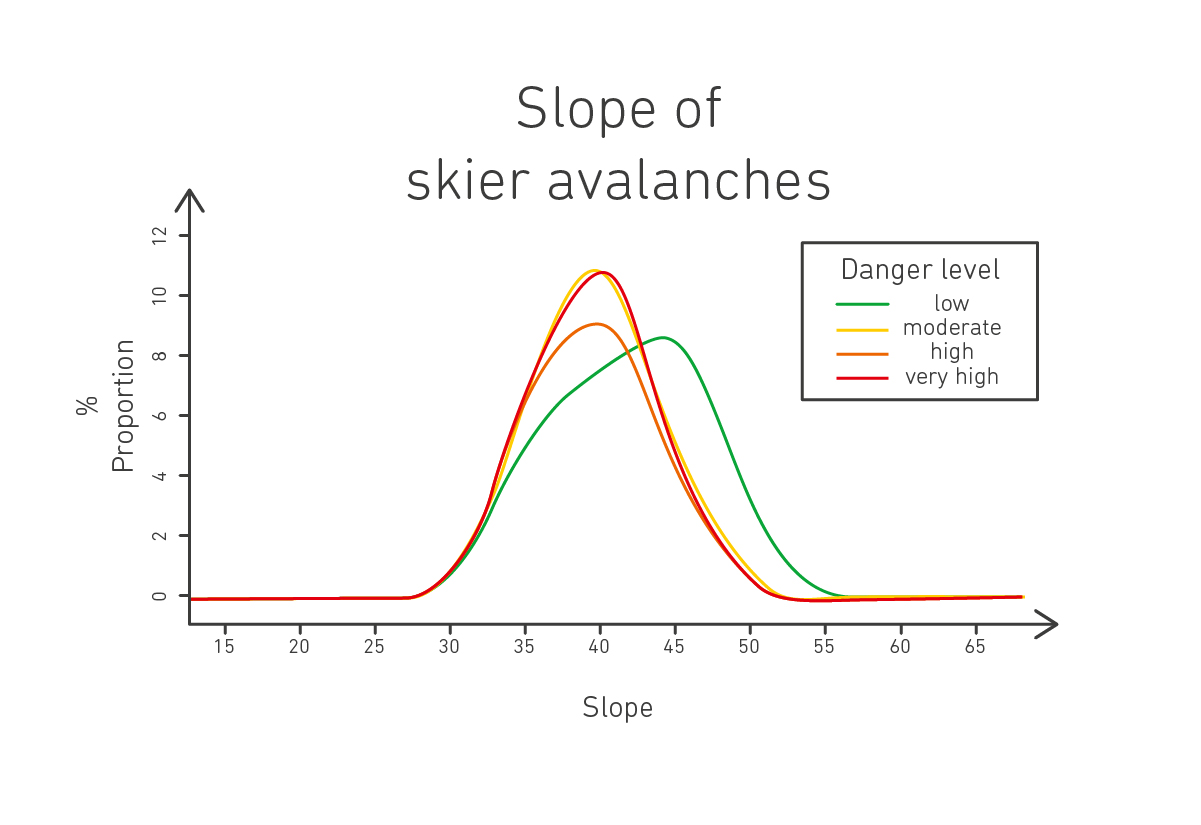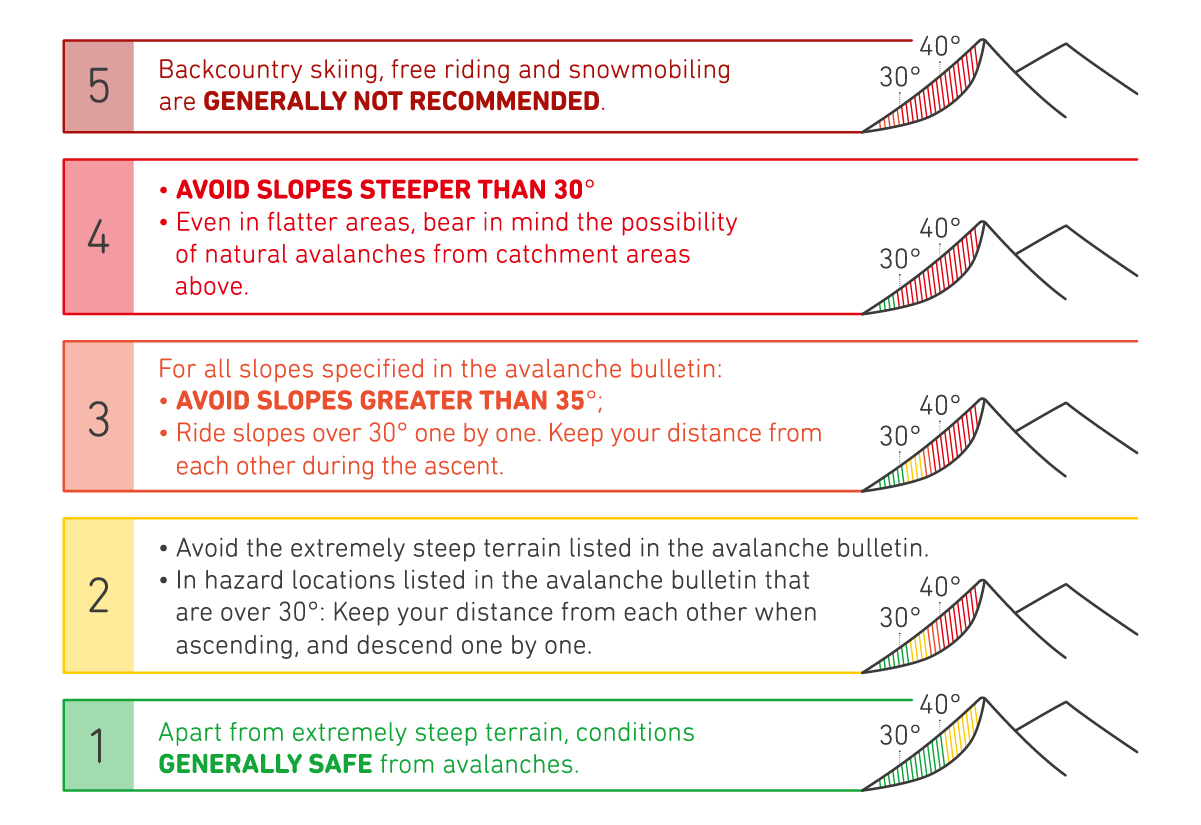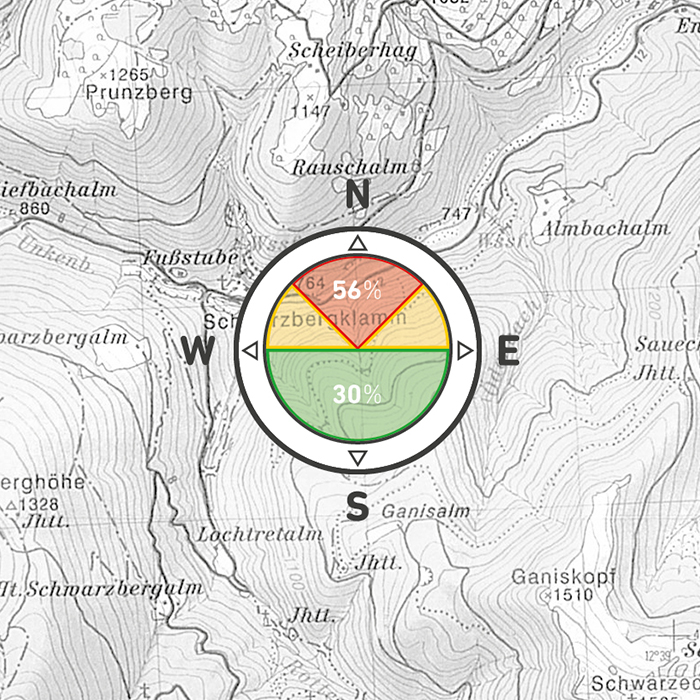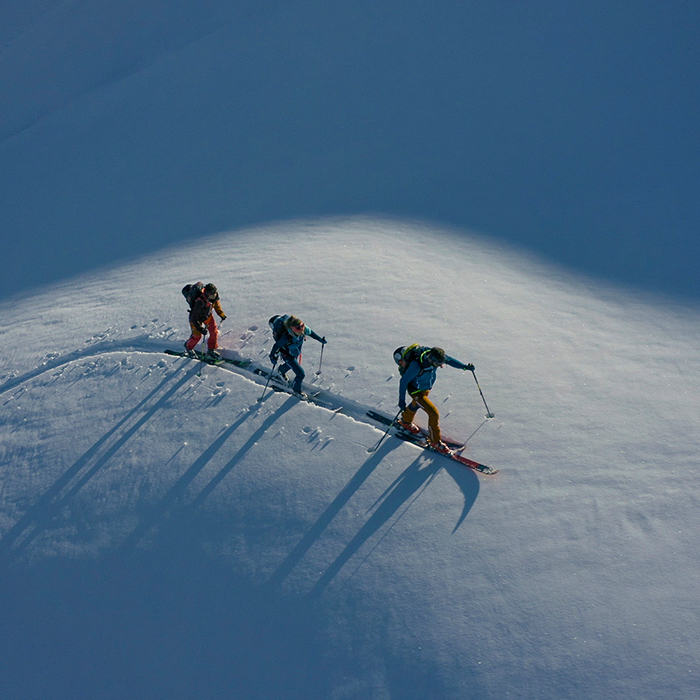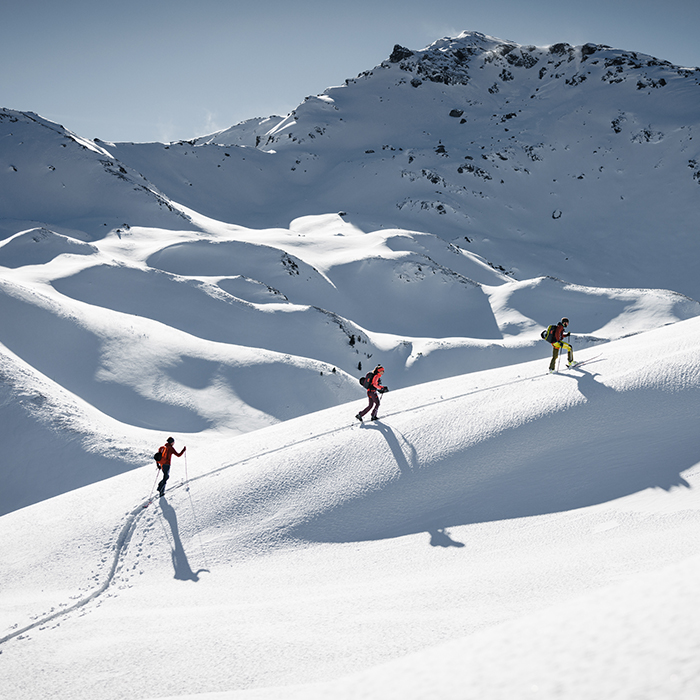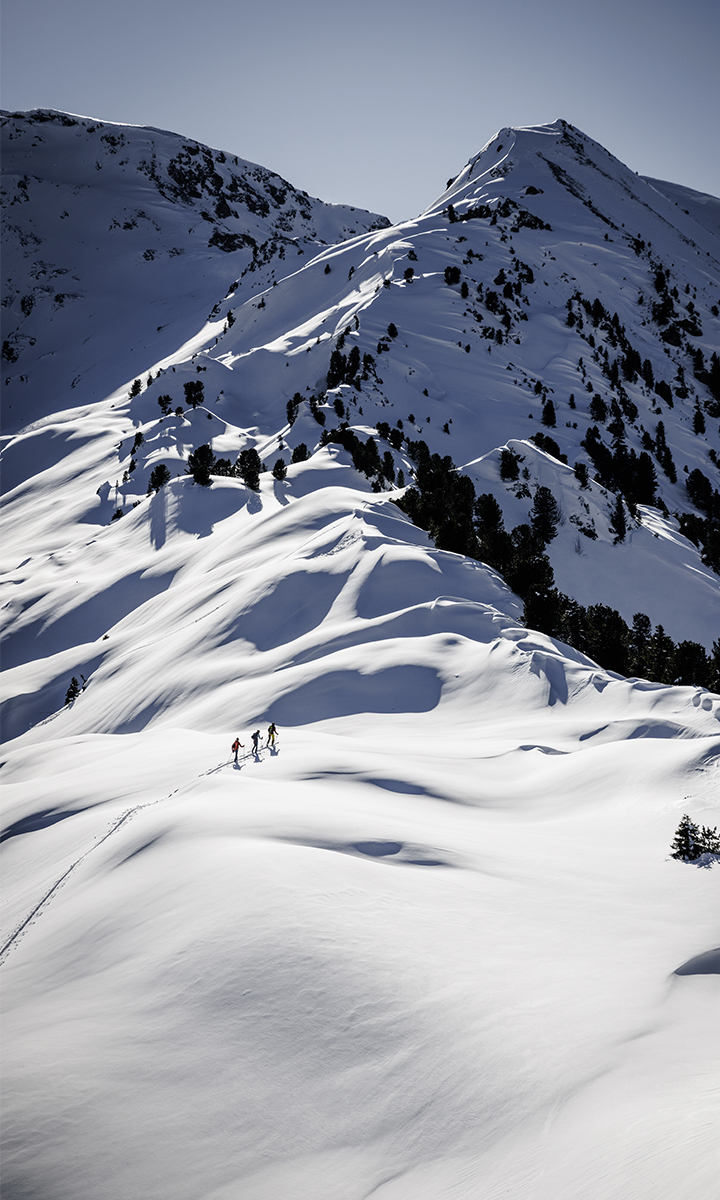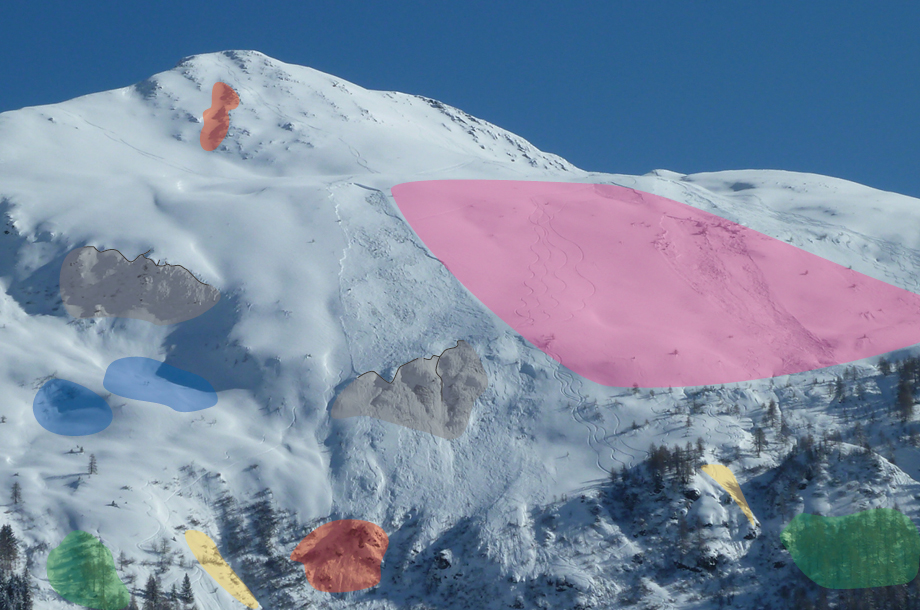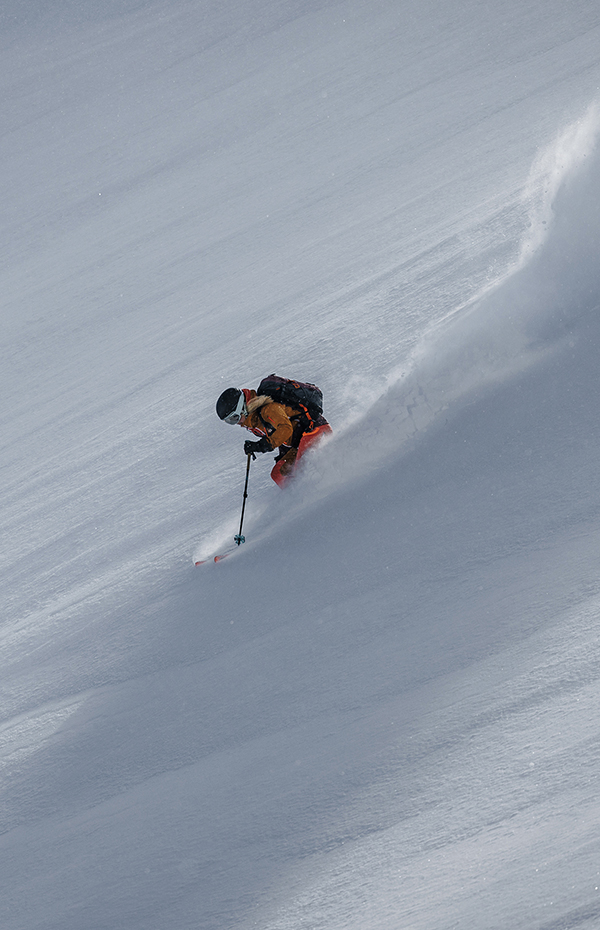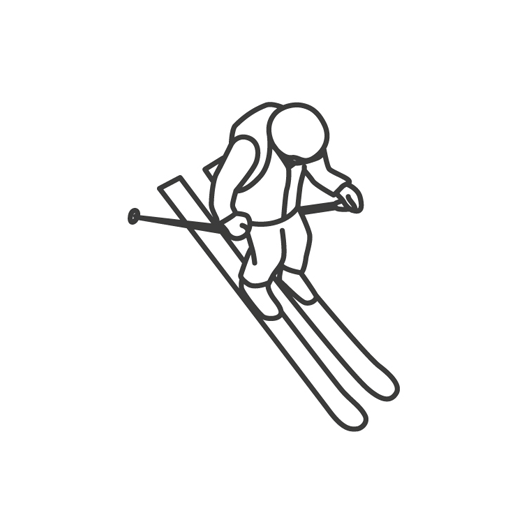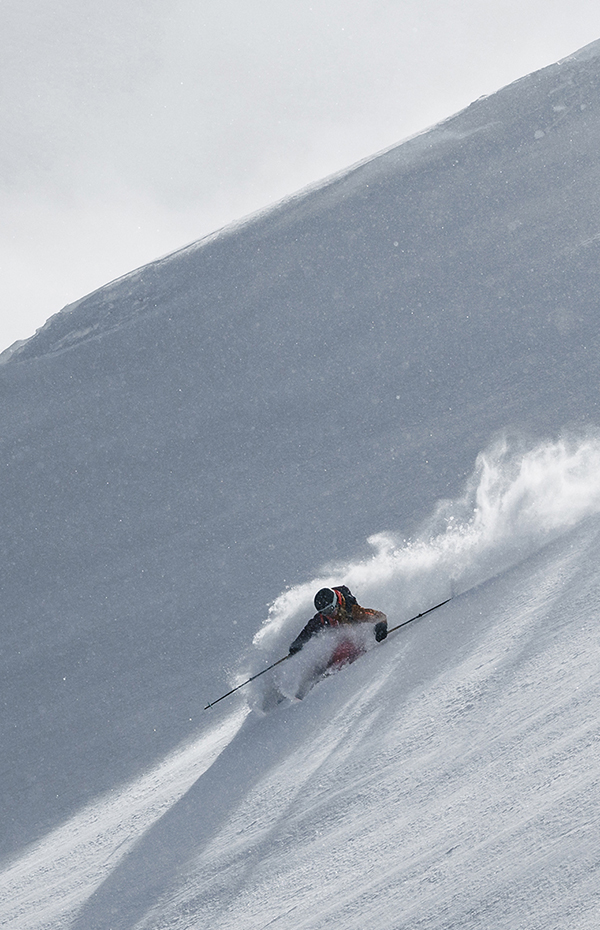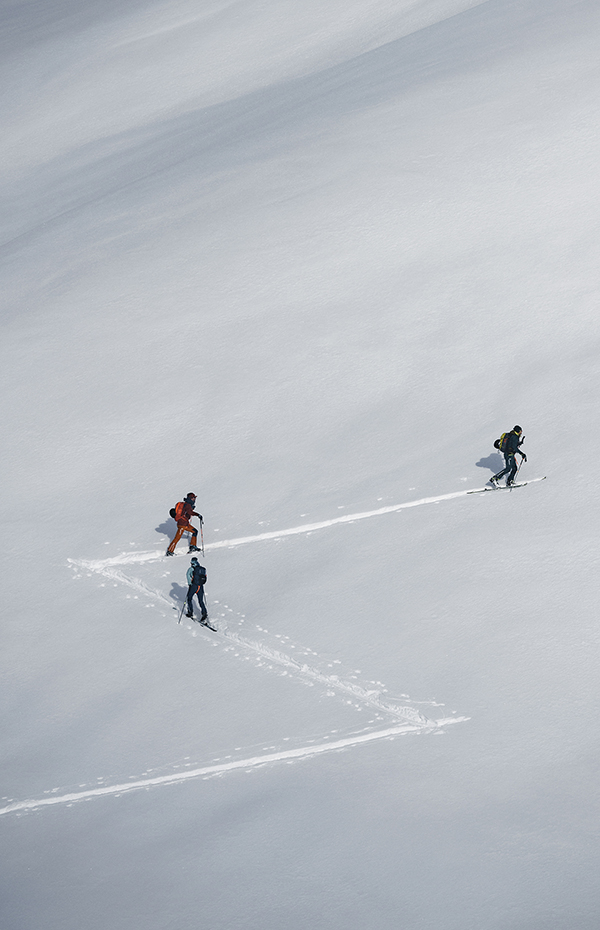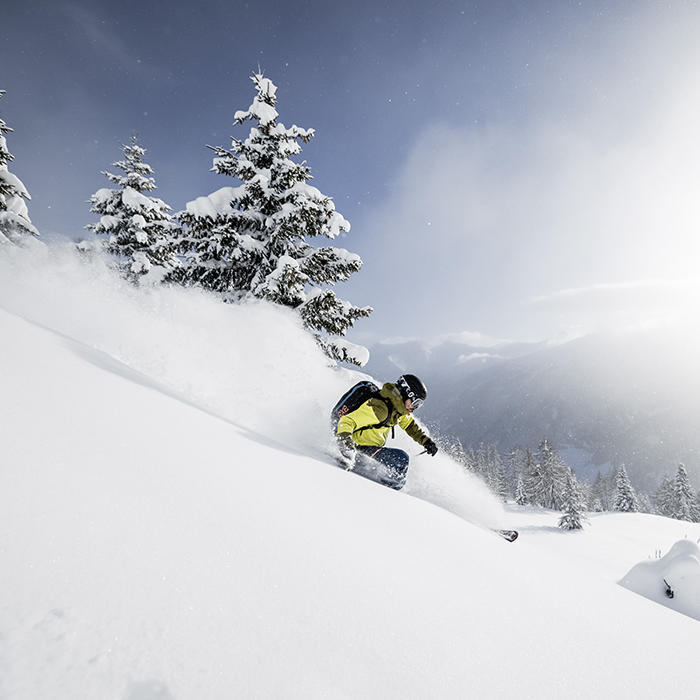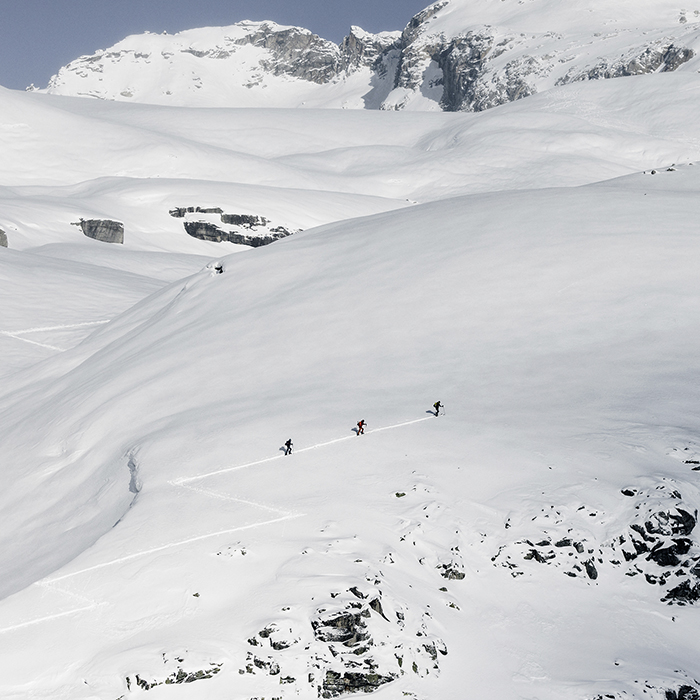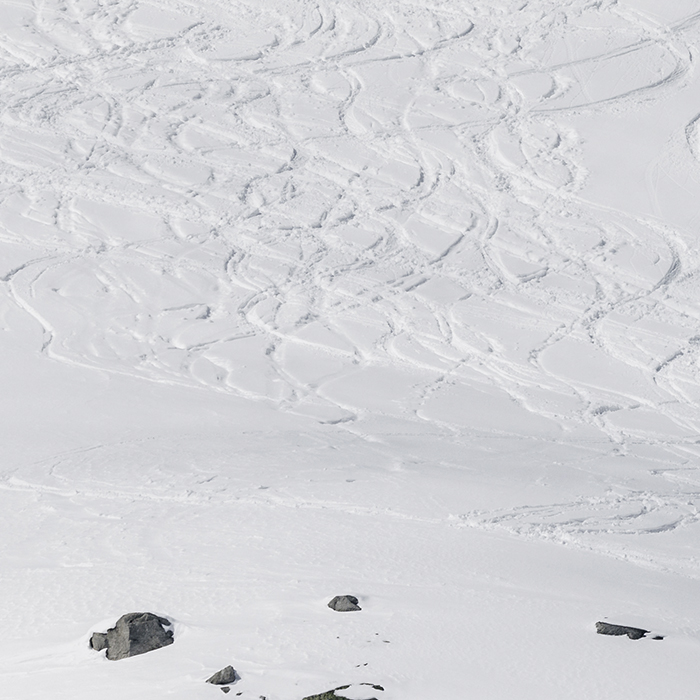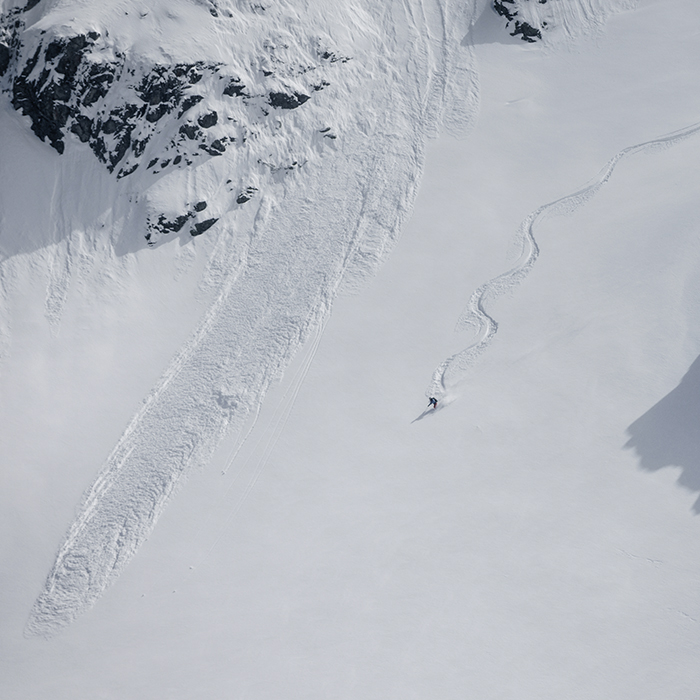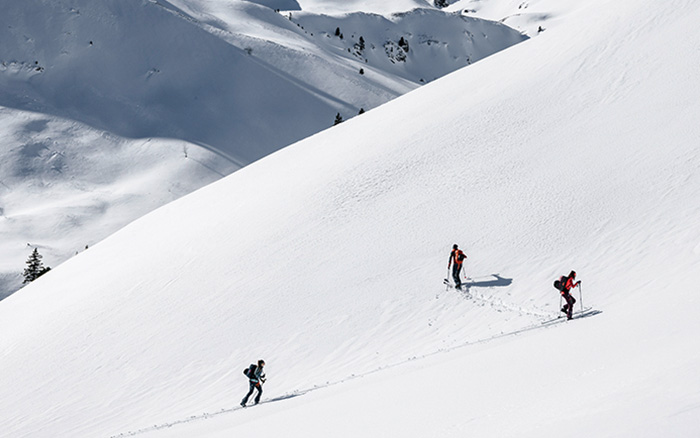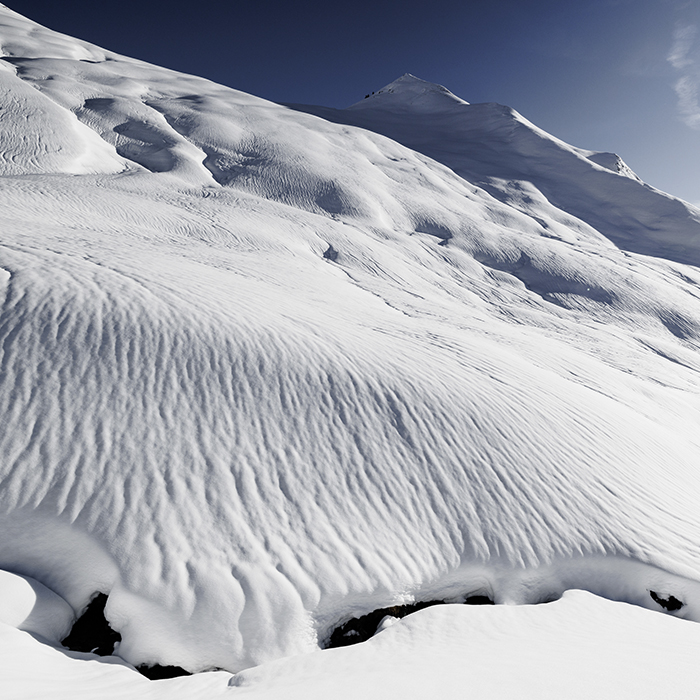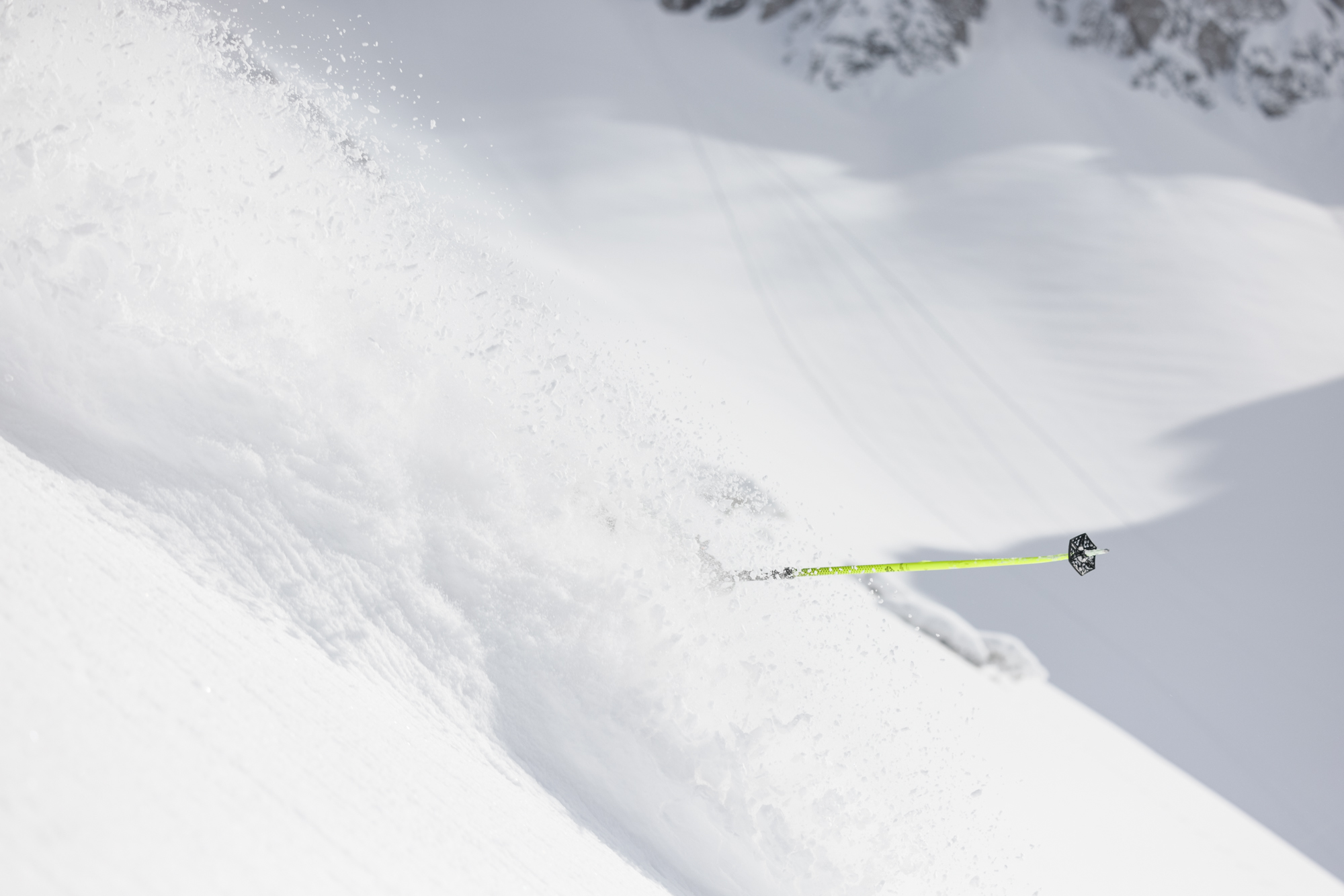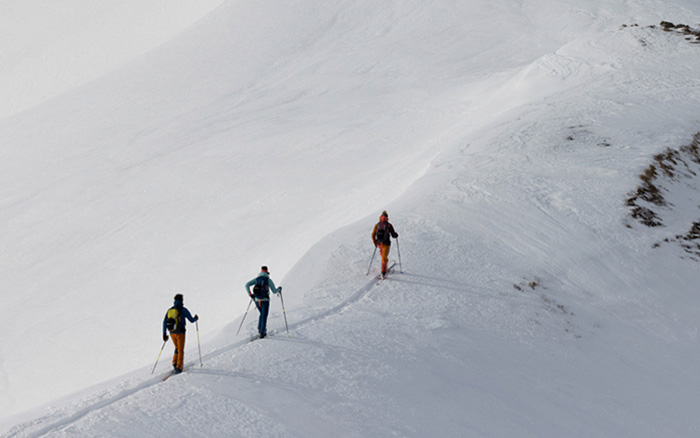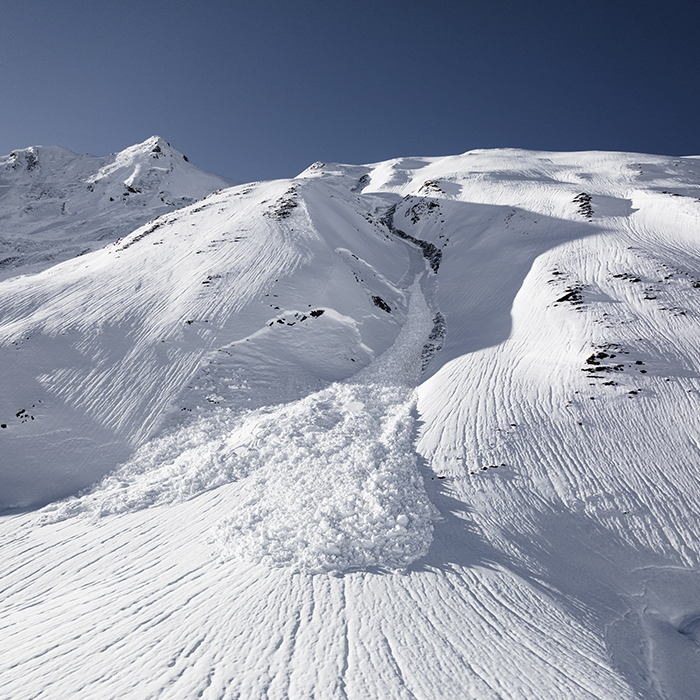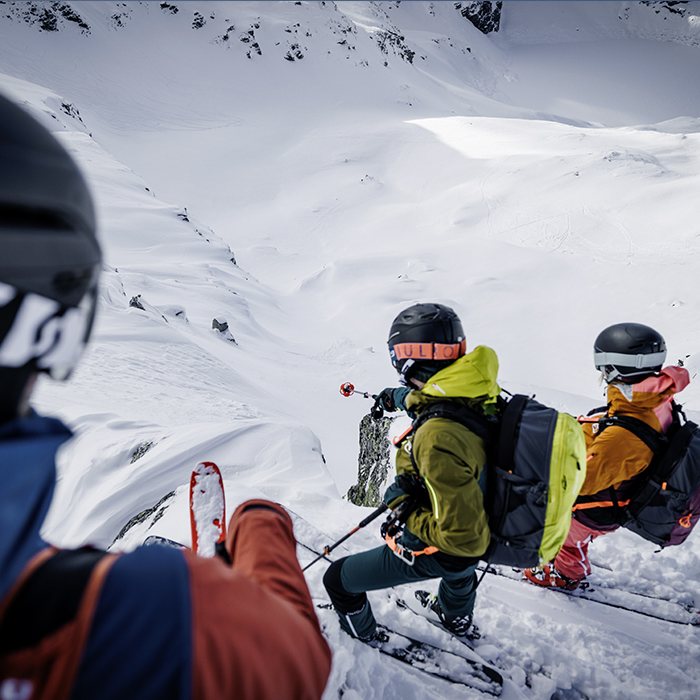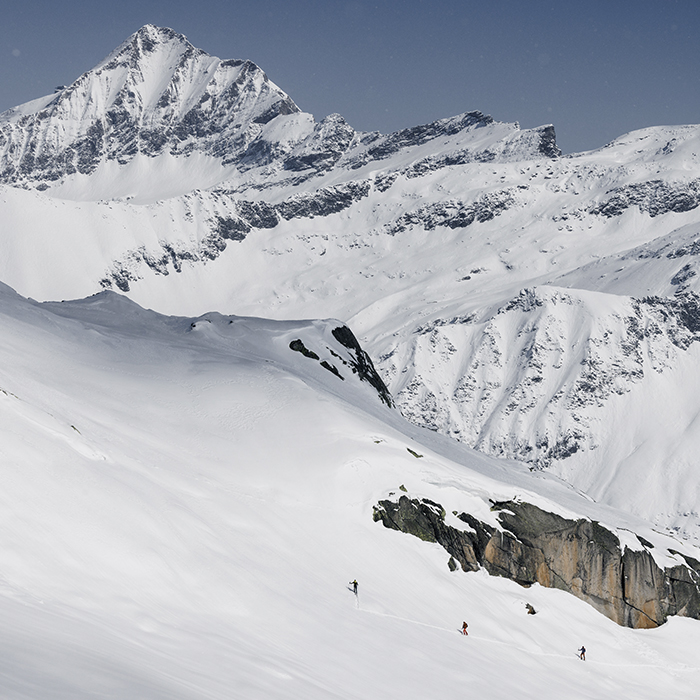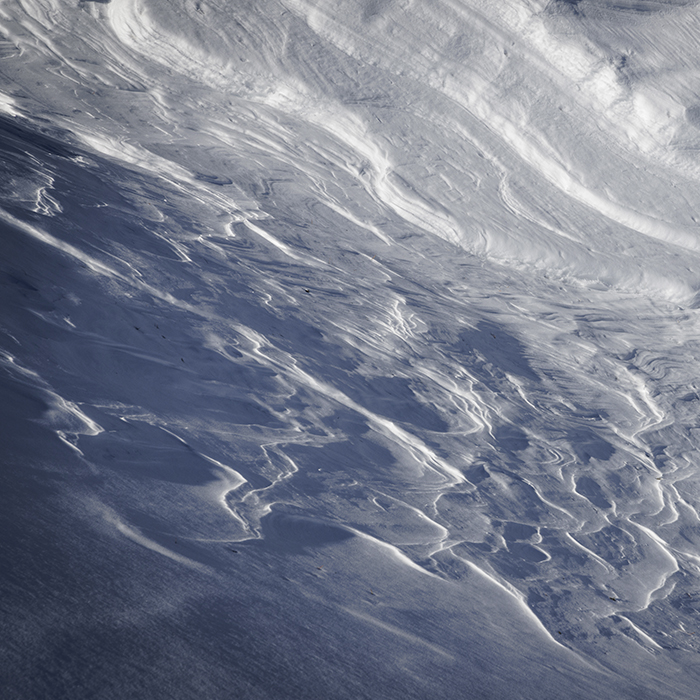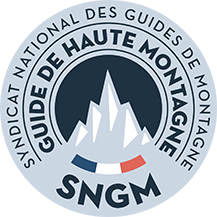VIDEO
AVALANCHE DANGER: THE CONTRIBUTING FACTORS
AVALANCHE FACTORS
Prerequisites for a slab avalanche
Avalanches result from the interplay of various factors. The critical factors are: weather and snowpack (conditions), terrain, people.
The weather has a direct impact on the snowpack and, therefore, influences the current avalanche problem: if it is windy you must expect wind-drifted snow; if it snows you must expect a new snow problem, etc. Together, the weather and the snowpack make up the “conditions” factor.
The terrain not only facilitates the formation of avalanches, it also determines the consequences of the avalanche. Rockfall beneath a steep slope can be a death trap, even in the event of a harmless little snowslide.
Regardless of the type of avalanche, they are most often triggered by people who go out onto a dangerous slope.
AVALANCHE FACTOR CONDITIONS
The weather determines the snowpack. Together, they represent the “conditions” – a crucial parameter in avalanche danger.


AVALANCHE CONDITIONS
The snowpack is determined by the weather, i.e. wind, temperature, sun exposure and precipitation. “Conditions” refer to the interplay between the factors “weather” and “snowpack”.
Wind, known often in the past as “the architect of avalanches”, transports snow and forms “snow slabs”. The temperature influences the snowpack; it facilitates the formation of weak layers or leads to the snowpack heating up and, therefore, becoming unstable. Sun exposure also influences the snowpack. When it warms up the upper layers, they become wet and can later freeze. Precipitation – in the form of new snow or rain – often increases the avalanche danger level. A new layer of snow may enable a snow slab to form. Rain wets and weakens the snowpack. Both rain and snow add additional stress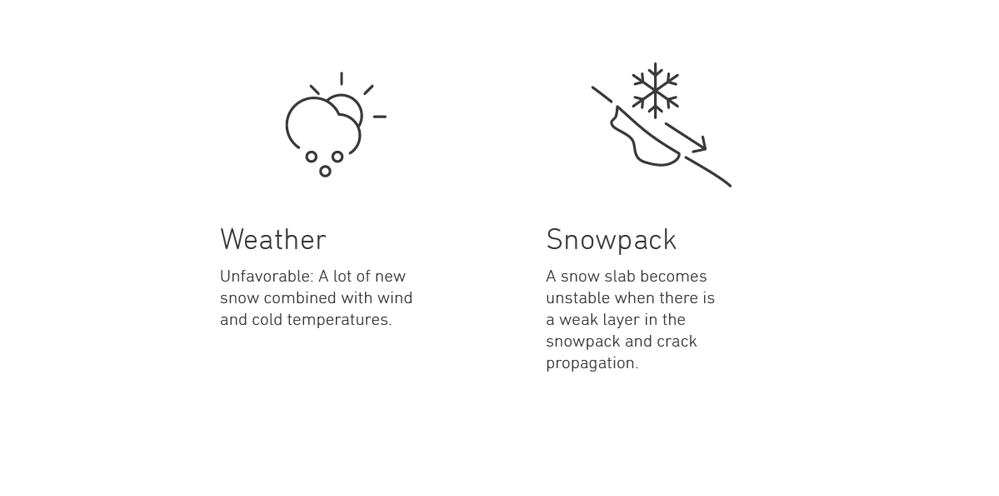
WEATHER
Precipitation creates and influences the snowpack over the course of the winter. A new snow layer often poorly bonds with the old snow layer. Therefore, avalanche danger typically increases during or shortly after snowfall. New snow is also an additional load for the old snowpack. Rain also constitutes an additional load, and warms and soaks the snowpack. During a period of precipitation, the amount of new snow, the temperature and the wind are the main factors for the development of avalanche danger. An unfavorable combination of these factors leads to what is called “critical new snow depth” – the avalanche danger level can be expected to increase.
WIND-DRIFTED SNOW
Wind, the “architect of avalanches”, is responsible for the formation of wind slabs. New or old snow transported by the wind is especially brittle and perfect for forming a “slab”. This wind-drifted snow can optimally transfer stress and lead to the dreaded crack propagation.
The wind transports the snow from areas exposed to the wind to zones sheltered from the wind, e.g. behind terrain breaks and ribs. Dangerous wind-drifted snow gathers in bowls and depressions. This often occurs along valley slopes.
HOW DANGEROUS IS IT?
Wind-drifted snow is dangerous when a weak layer is situated within or directly underneath the wind-drifted snow slab. Furthermore, the additional load of a wind slab can cause a weak layer further down in the snowpack to become overloaded.
SNOWPACK – DANGEROUS AREAS
The snowpack is not the same everywhere. There is more snow in some areas and less in others depending on the slope aspect, elevation and terrain features. In shaded areas the snowpack is often loose, whereas on sunny slopes it is settled and more compact or has formed a crust. These geographical differences mean that there are dangerous areas and areas that have almost no avalanche risk.
The avalanche bulletin describes dangerous areas using the compass rose, among other things. Avalanches can often only be triggered in certain sectors of the compass rose.
TRANSFORMATION PROCESSES
The snowpack is not a static structure – it is constantly changing. Snow crystals transform permanently. There are three possible transformation processes in the snowpack: faceting, rounding and melt-freeze metamorphism.
AVALANCHE CONDITION TERRAIN
Terrain is significant in risk assessment for two reasons. Firstly, there are terrain features that facilitate slab avalanches; secondly, the terrain often forms “terrain traps”.


AVALANCHE TERRAIN
Slab avalanches can most often be observed on flat, level slopes or in slightly concave slope shapes such as bowls and extensive gullies. By contrast, slab avalanches are more seldom on ridgelines, in narrow gullies and couloirs and in undulating terrain. This is because crack propagation occurs more easily when the snowpack is as homogenous as possible, i.e. very little height difference within the snowpack. In addition, a snow slab requires a certain size (>20 x 20m) and have a steepness of at least 30°. Slab avalanches usually occur on slopes with a steepness of 38°.
STEEPNESS AND DISTRIBUTION OF SLOPE ANGLES
On average, avalanches triggered by skiers occur on a slope angle of 38°. In isolated cases, slab avalanches can be triggered on slopes of 30° and above. Snow slabs that are triggered at lower angles stay in place due to friction. At lower slope angles, you will only hear a settling noise (whumpf sound) – a warning sign that the slab has been triggered and the crack has propagated. The only reason the snow slab does not glide down is the lack of steepness.
SLOPE ASPECT AND ELEVATION
There are often dangerous areas at particular slope aspects and elevations. There are around twice as many avalanche accidents on north-facing slopes as on south-facing slopes. However, it is not known how often the slope aspects are frequented in comparison with one another.
TERRAIN TRAPS
The terrain has a decisive influence on burial depth and mechanical injuries. This is why we talk about “terrain traps”.
Ditches, bowls and obstacles in the runout zone increase burial depth and, therefore, decrease the chances of survival. Obstacles such as escarpments, rocks and trees in the path of an avalanche often lead to fatal injuries.
TOPOGRAPHY AS A POSSIBLE CAUSE FOR DANGER
Terrain influences the risk of an avalanche in two ways. Firstly, slab avalanches are prominently seen on homogenous, extensive, slightly concave slopes. Wind and terrain also determine the lee areas where dangerous snow slabs can be found. Secondly, escarpments, rocks and trees often create life-threatening terrain traps. Ditches, bowls and pile-up zones in the runout zone of avalanche slopes can lead to deeper burials, causing increased fatalities.
The slope shape also influences a valanche formation. Avalanche accidents are particularly frequent at large, homogeneous and slightly concave slope shapes as well as wide gul lies and hollows. Accidents in convex or rugged terrain are less common.
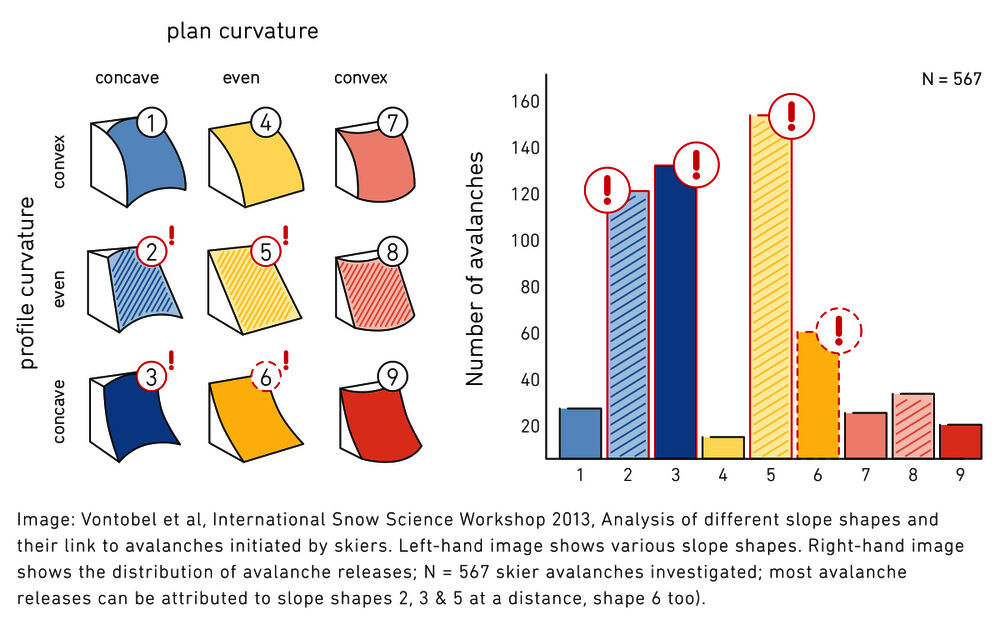
AVALANCHE FACTOR PEOPLE
A slope at risk of an avalanche is not a problem in itself – it is the people who create a problem by approaching it.


AVALANCHE FACTORS – PEOPLE
In addition to the snowpack and terrain, people are a crucial parameter for avalanche accidents and (too) often forgotten. Yet snow slabs are almost always triggered by people. Beside the “hard facts” such as behavior, group size and ability, it is often soft skills – group dynamic, motivation, lack of communication and objectivity – that contribute toward avalanche accidents.
HARD FACTS – SOFT SKILLS
It is always helpful to be aware of classic group phenomena when it comes to making avalanche decisions. In a group, people often feel safer than when they are alone, which tends to make them bolder and more willing to take risks. And when it comes to big groups, it’s often the loudest person who gets their own way. An open group dynamic, transparent communication and an ear for the “quiet voices” in the group can help make good decisions at critical moments.
Backing down can also be a mark of success – particularly in mountain sports!

